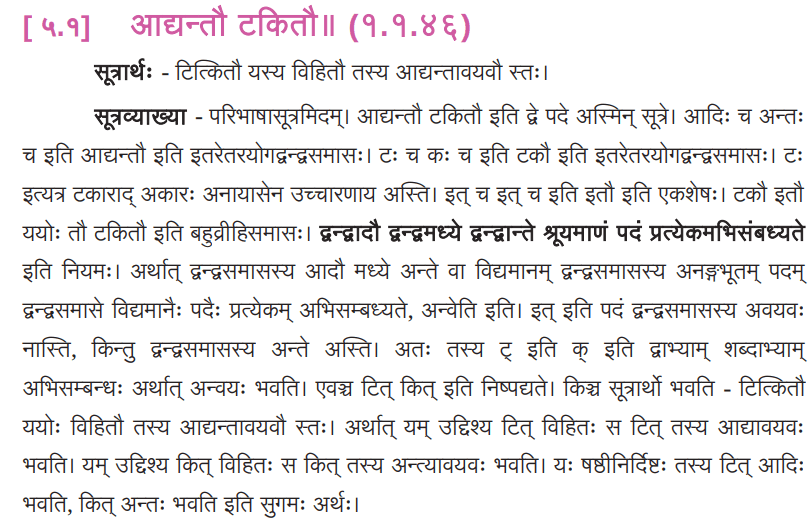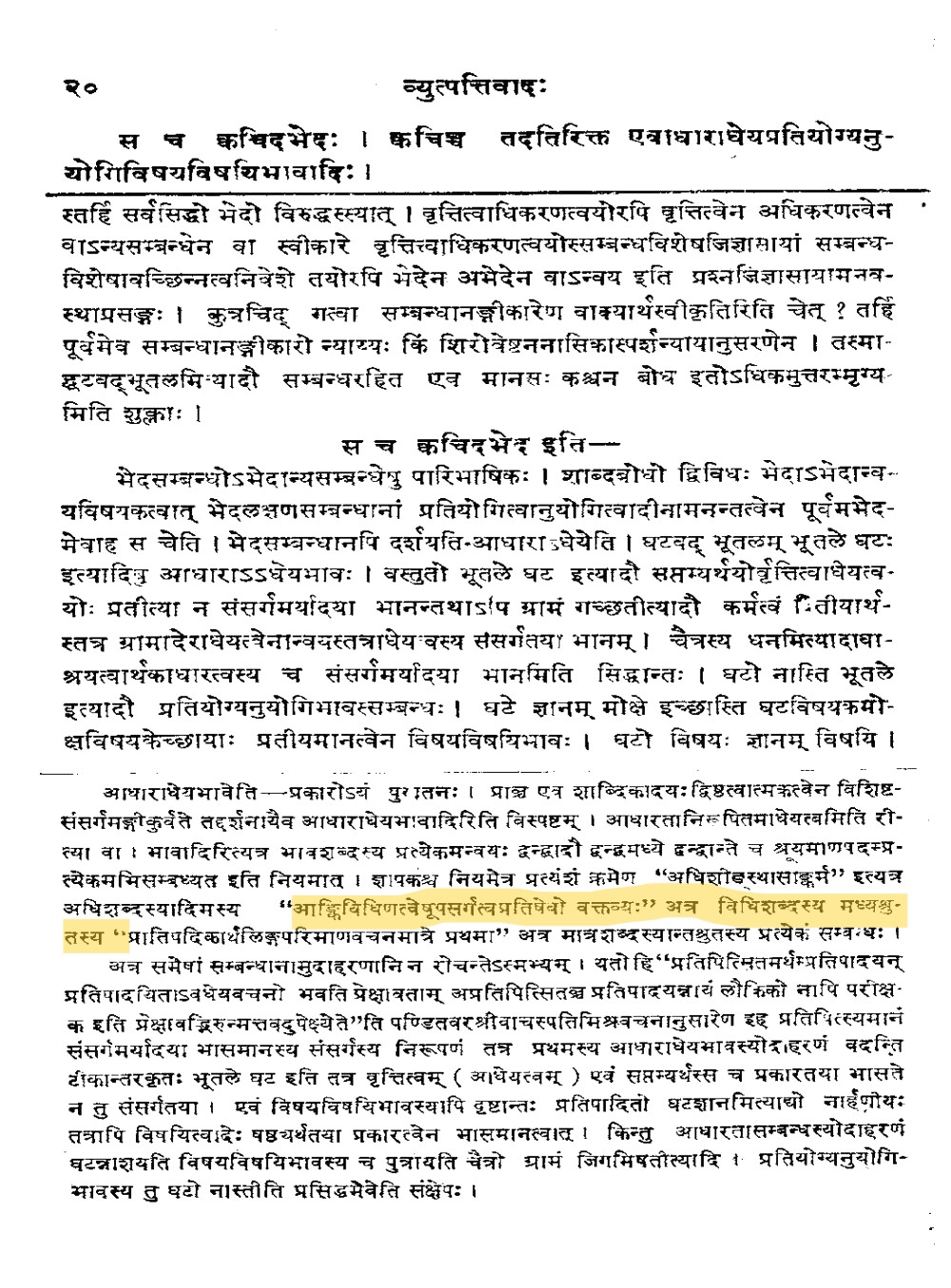The full न्यायः is - द्वन्द्वादौ द्वन्द्वमध्ये द्वन्द्वान्ते श्रूयमाणं पदं प्रत्येकमभिसम्बध्यते ।
The following is quoted from Ref 1.
In a द्वन्द्व-गर्भः compound (a compound which contains within it a द्वन्द्वः compound) the पदम् which (immediately) follows the द्वन्द्व: compound connects individually with the members of the द्वन्द्वः compound.
उदाहरणम् –
रागद्वेषवियुक्तैस्तु विषयानिन्द्रियैश्चरन् | आत्मवश्यैर्विधेयात्मा प्रसादमधिगच्छति || गीता 2-64||
First we form the द्वन्द्वः compound रागद्वेषौ as follows – रागश्च द्वेषश्च = रागद्वेषौ – attachment and aversion.
Then we form the द्वन्द्व-गर्भ-तृतीया-तत्पुरुष: compound रागद्वेषवियुक्तानि as follows – रागद्वेषाभ्यां वियुक्तानि = रागद्वेषवियुक्तानि (इन्द्रियाणि) – (senses) devoid of attachment and (devoid of) aversion. The विवक्षा in the verse is तृतीया-बहुवचनम् hence we get the form रागद्वेषवियुक्तैः (इन्द्रियैः)।
As per the न्यायः – द्वन्द्वान्ते श्रूयमाणं पदं प्रत्येकमभिसम्बध्यते, in the final compound ‘रागद्वेषवियुक्त’ the पदम् ‘वियुक्त’ which (immediately) follows the द्वन्द्वः compound ‘रागद्वेष’ connects individually with the members (‘राग’ and ‘द्वेष’) of the द्वन्द्वः compound. Hence we get the meaning ‘devoid of attachment and devoid of aversion.
Quoted from Ref 3.
As per the न्याय: – द्वन्द्वान्ते श्रूयमाणं पदं प्रत्येकमभिसम्बध्यते, in the final compound ‘योगवैराग्ययुक्त’ the पदम् ‘युक्त’ which (immediately) follows the द्वन्द्व: compound ‘योगवैराग्य’ connects individually with the members (‘योग’ and ‘वैराग्य’) of the द्वन्द्व: compound. Hence we get the meaning ‘योगवैराग्ययुक्त’ = ‘योगयुक्त’ + ‘वैराग्ययुक्त’ = ‘endowed with Yoga’ and ‘endowed with dispassion.’
References:
- https://www.nios.ac.in/media/documents/bgp/246_Sanskrit%20Vyakarna_Hindi/246_Sanskrit%20Vyakarna_lesson_5.pdf
- https://avg-sanskrit.org/2016/05/



 For dvandvamadhya, he says: āṅkividhiṇatveṣūpasargatvapratiṣedho vaktavyaḥa.
For dvandvamadhya, he says: āṅkividhiṇatveṣūpasargatvapratiṣedho vaktavyaḥa.
Great answer! Since the full rule consists द्वन्द्वमध्ये as well, there must be a word with two dvandvas on either side. I have also added some references in another post.